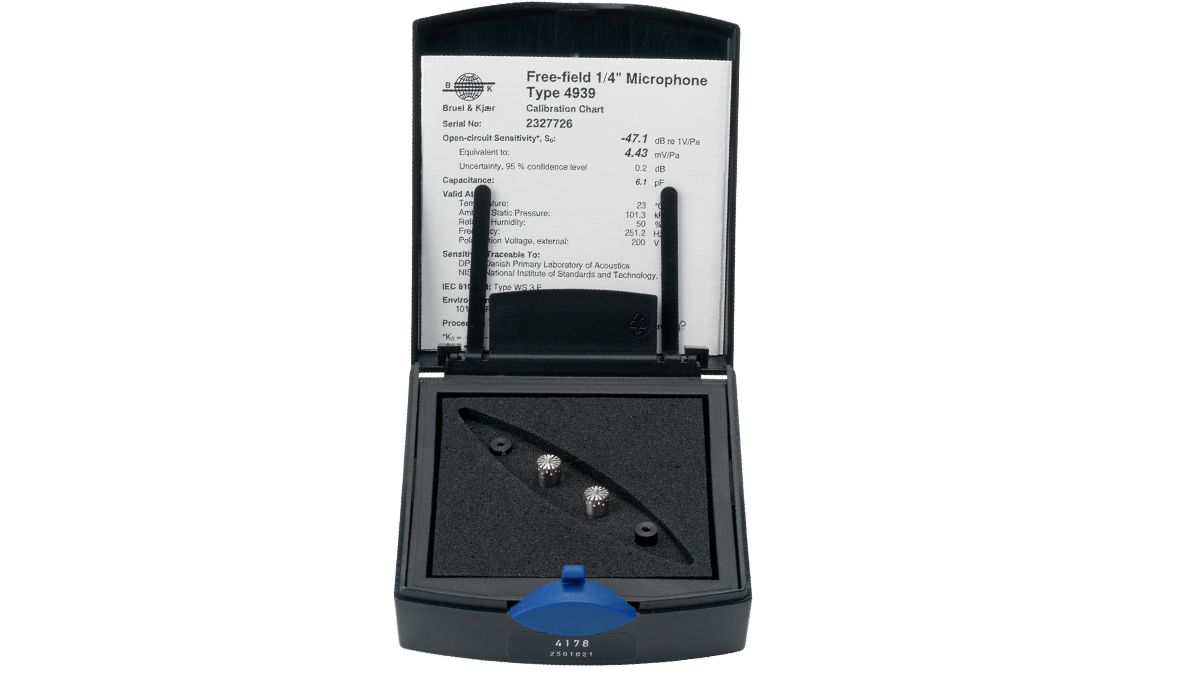TYPE 4178
1/4" Sound Intensity Microphone Pair, Ext. Polarized
Sound Intensity Microphones specially designed for high level and high frequency measurements over a frequency range of 4 Hz to 100 kHz, with broadband matching of phase responses.
Solicitar ofertaType 4178 consists of a pair of selected Type 4939 1/4-inch microphones, whose phase responses are matched between 100 Hz and 20 kHz.
USE SCENARIOS
- Measurement of sound intensity using the two-microphone technique, following IEC 61043 Class 1
- Sound power measurements following ISO 9614-1, ISO 9614-2, ECMA 160, and ANSI S12.12, using sound intensity probes
- Measurement of particle velocity of sound sources
FEATURES
- Broadband matching of phase responses
- Phase calibrated in 1/3-octave frequency bands from 100 Hz – 20 kHz
Type 4939 microphones are specially designed for high-level and high-frequency measurements. By using stainless steel diaphragm and protection grid, the microphone is optimized to withstand rough environments and is capable of working at high temperatures – up to 150°C (302°F). The microphones are mainly used in Sound Intensity Probes for sound power and intensity measurements, and can also be used for particle velocity measurements.
Type 4178 is supplied with 6 mm and 12 mm spacers, along with calibration charts giving the individually measured free-field frequency response for each microphone and a Phase Response Comparison Calibration (100 Hz – 20 kHz).
CALIBRATION
Phase calibration of 1/4-inch microphone pair Type 4178 is done at Brüel & Kjær by subjecting the two microphones to the same sound signal in a pressure coupler. This individual phase calibration can be used to derive the Pressure-Residual Intensity Index for the microphone pair.
Sound intensity measurement systems containing a sound intensity probe set can be conveniently calibrated using
Sound Intensity Calibrator Type 3541-A. This permits simultaneous sensitivity adjustment of both channels of the processor (in pressure, particle velocity, or intensity modes) and allows determination of the 20 Hz – 5 kHz Pressure-Residual Intensity Index of the probe and processor combinations.
- Capacitance
- 6.1 pF
- Diameter
- ¼
- Dyn. range
- 28 – 164 dB
- Freq. range
- 2.6 – 180000 Hz
- Inherent noise
- 28 dB A
- Lower limiting frequency -3dB
- 3 Hz
- Optimised
- Sound Intensity
- Polarization
- Ext polarized
- Polarization voltages
- 200 V
- Pressure coefficient
- -0.007 dB/kPa
- Sensitivity
- 4 mV/Pa
- Temperature coefficient
- 0.003 dB/ºC
- Temperature range
- -40 – 150 ℃
- Venting
- Side
- Weight
- gram
- Sound field
- Free-field
- Input type
- Classic
- Microphone type
- Sound Intensity

